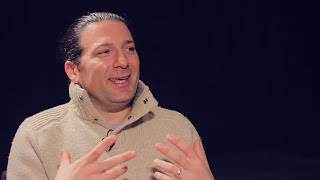In Chapter 17 of 19 in his 2012 Capture Your Flag interview, standup comedian Matt Ruby answers "What Has Louis CK Taught You About Making Better Comedy Videos for the Web?" Ruby notes how having full control over the creative process allows Louis CK to communicate a more personal point of view. He notes how Louis CK is able to get more personal in his work on his show "Louie." Ruby notes how this is also true with Woody Allen films and how the director also keeps ownership over his personal vision. Matt Ruby is a standup comedian and comedy writer based in New York City. He co-produces the weekly show "Hot Soup", co-hosts the monthly show "We're All Friends Here", and manages a comedy blog "Sandpaper Suit". Ruby graduated from Northwestern University.
Transcript:
Erik Michielsen: What has Louis CK taught you about making better comedy videos for the web?
Matt Ruby: Well, I think the fact that he makes everything himself and, you know, like writes it, acts in it, edits it, directs it, and has full control over the process I think is, you know, I think you can sense it in the stuff that he makes, it feels more like something that comes from a single person’s viewpoint as opposed to so much of what’s on TV seems like it comes from a room filled with like 20 people that are all trying to agree which is cool but like a little bit more – makes stuff more homogenous and so I think, you know, part of what you see from — I’m thinking specifically the show Louis is that you can— if you do that, you can get stuff that’s sort of weirder, more personal or more—you know I think Woody Allen films have that too where it’s like, oh this really feels like it just came from one person, as opposed to like a committee decided that this was best.
And I think it’s part of like what makes his stuff special and I think it’s something to—I don’t if I necessarily shoot for it in everything that I do but just something to keep in mind that is like, you know, oh, it’s okay to be cool or—not it’s okay to be cool—but it’s okay to be weird or to you know—sometimes his stuff will just get really absurd or just go off into some weird, you know, fantastical place and then come back to reality and, you know, sort of stuff that if you had a committee deciding on, they’d be like, no, that doesn’t make sense. Whereas like you can kind of indulge whatever your own personal vision for it is, and that’s what makes it unique to you and what you’re making is gonna be more unique.




















